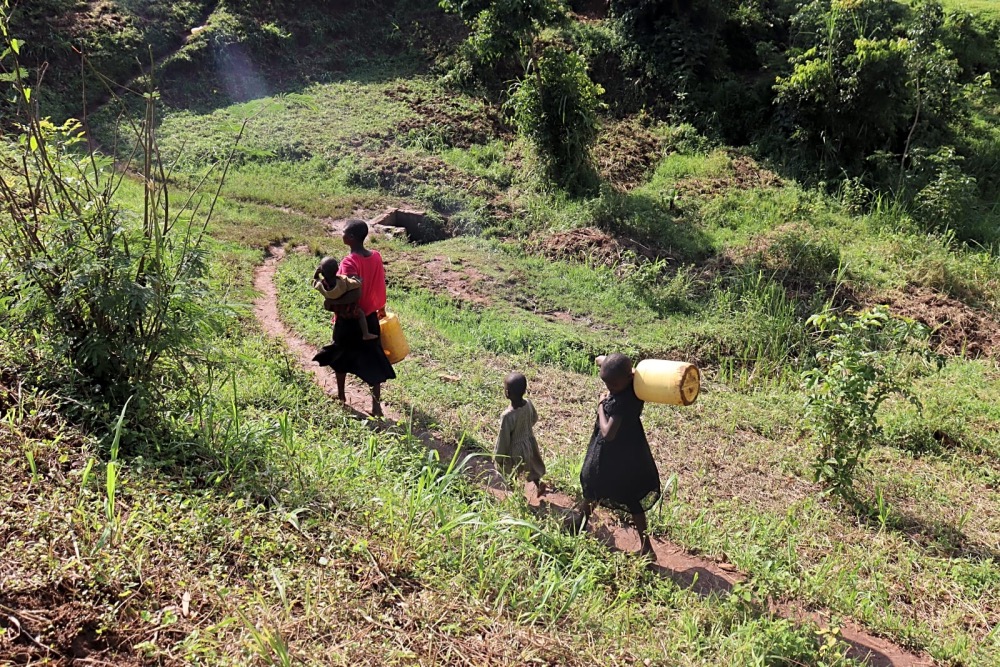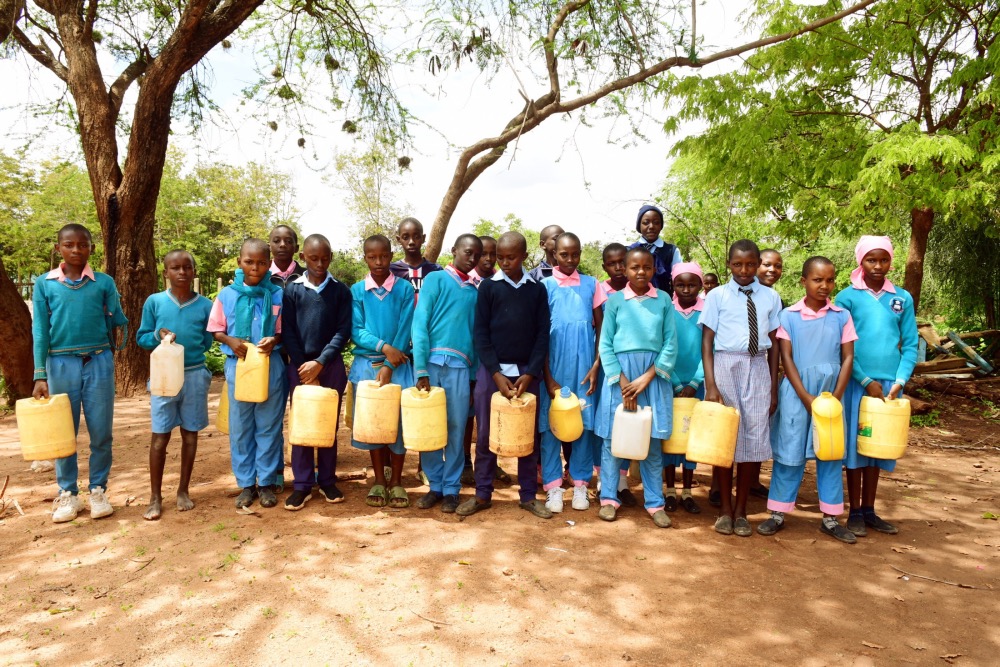A Hand Up, Not a Handout: Why Water Access Changes Everything
Imagine it’s morning. You go to brush your teeth, make coffee, or start a shower — but there’s no water. In our modern world, it’s an inconvenience, sure, but it’s solvable. If your tap runs dry, you have options: you can pick up bottled water from a store, head to a friend’s place, or even take a drive to your nearest coffee shop. For most Americans, a water outage is annoying but manageable.
But what if you couldn’t just go get more? Imagine if every drop of water you needed required hours of walking in harsh conditions, carrying heavy containers under a blistering sun. And imagine whatever water you find — your only option — might make you sick.
This is the reality in many communities where The Water Project works. Access to water here is not a matter of convenience; it’s a matter of survival. Without it, every aspect of life — from health to education to income — is compromised. And, unlike in America, there’s no backup plan, no “quick fix.”
In so many ways, life without ready access to safe water is like a constant catch-22.
For families in many parts of sub-Saharan Africa, a lack of water impacts every facet of life. Imagine a farmer who works from sunrise to sunset but struggles to grow enough food because he can’t water his crops. In many of these communities, people rely on farming and livestock to survive, but agriculture depends on water. Without water, crops wither, animals grow weak, and families are left with nothing to sell or eat.
The Solution Isn’t Easy
People in sub-Saharan Africa need reliable water sources. Creating a water source requires money to contract a driller, or at the very least, water for concrete for a do-it-yourself build. But in communities where resources are already stretched thin, money is often scarce, and every dollar is prioritized for other essentials: food, basic shelter, and the occasional health expense. Further, many hand-dug wells dry up due to climate change, water overuse, and erratic weather patterns.
With nothing left, they’re back to square one, forced to spend hours daily on the arduous task of collecting unsafe water just to survive. And survival comes at a cost — not only in time and effort but also in the dangers faced along the way.
How a Lack of Water Steals Futures
The journey to water is often dangerous, requiring treks through rough and sometimes unsafe terrain. Women and girls spend hours walking under the harsh sun, exposed to heat, and, in some areas, the threat of wildlife. By the time they return, they’re exhausted. The water they carry is likely contaminated — breeding grounds for waterborne diseases like cholera, typhoid, and dysentery. But for many families, making this journey and drinking contaminated water is the only choice.

In communities without clean water, illnesses from contaminated water are common. Children get sick, miss school, and can’t fully focus on their education. Parents, often needed to tend to farms or other work, have to take time to care for sick children, further straining their limited resources. Medical expenses pile up, creating yet another financial burden and trapping families in a cycle that feels impossible to escape.
For children, the impact extends beyond immediate health concerns. Missing school due to illness or the need to help gather water means they fall behind academically, making it hard to gain the skills that could eventually lift them out of poverty. In communities where every able-bodied person is essential for daily survival, a child’s education can seem secondary to the immediate need for water. Girls, especially, are often expected to prioritize family responsibilities over schooling, widening the gender gap in education and limiting their future opportunities.
Education offers a pathway to better job opportunities, health, and stability — but without water, a good education remains an elusive dream. Kids struggle with an unrelenting reality: they can’t learn effectively if they’re constantly thirsty, sick, or exhausted from hours spent fetching water. Without education, children are left without the tools they need to create a brighter future for themselves and their families.

In the face of these challenges, people in water-scarce regions are endlessly resilient. They work tirelessly to rise above their circumstances, but without water, every path is blocked.
When a community gains access to clean water, the immediate and long-term effects are profound. Children attend school regularly. Adults are healthier and can devote more time to work. Families can grow food and care for livestock, generating income to cover essentials and save for the future. And by sharing in the tasks of building and maintenance, community members take ownership of their new water resources, ensuring they’re invested in their upkeep for years to come.
Water: The Foundation for a Future
Now, it’s time to imagine something beautiful. Take a moment to dream about the possibilities that unfold when we create reliable water sources.
Farmers can grow enough produce to feed their families and sell the surplus. Their children can attend school and focus on learning, no longer weighed down by the daily struggle to find water. Community members can come together to develop businesses, establish markets, and create a stronger local economy. For women and girls, clean water access frees them from the daily trek for water, opening doors to education, personal growth, and employment opportunities.
In this way, water is more than a resource; it’s a foundation for self-sufficiency, resilience, and independence. Each water source we build together supports a thriving community where everyone has the chance to contribute, succeed, and dream. And when you support water projects, you’re not just helping a single family or individual; you’re helping an entire community lay the groundwork for a sustainable future.
By providing access to safe, reliable water, The Water Project isn’t offering a handout; we’re offering a hand up.
A Life-Changing Opportunity
Imagining life without water is difficult for those of us who can solve a water outage with a quick trip to the store or a call to a repair service. But for millions worldwide, the struggle for water defines every day. By supporting The Water Project, you’re transforming lives. You’re helping build pathways out of poverty, creating healthier communities, and unlocking the potential that lies within each person — a potential that, without water, remains untapped.
When we say water is life, we’re not just speaking metaphorically. Water is the first step toward health, education, and economic stability. It’s the first step to a self-sustaining future. And for communities striving to break free from the relentless grip of water scarcity, it’s the key that unlocks every door.
Home More Like ThisTweet